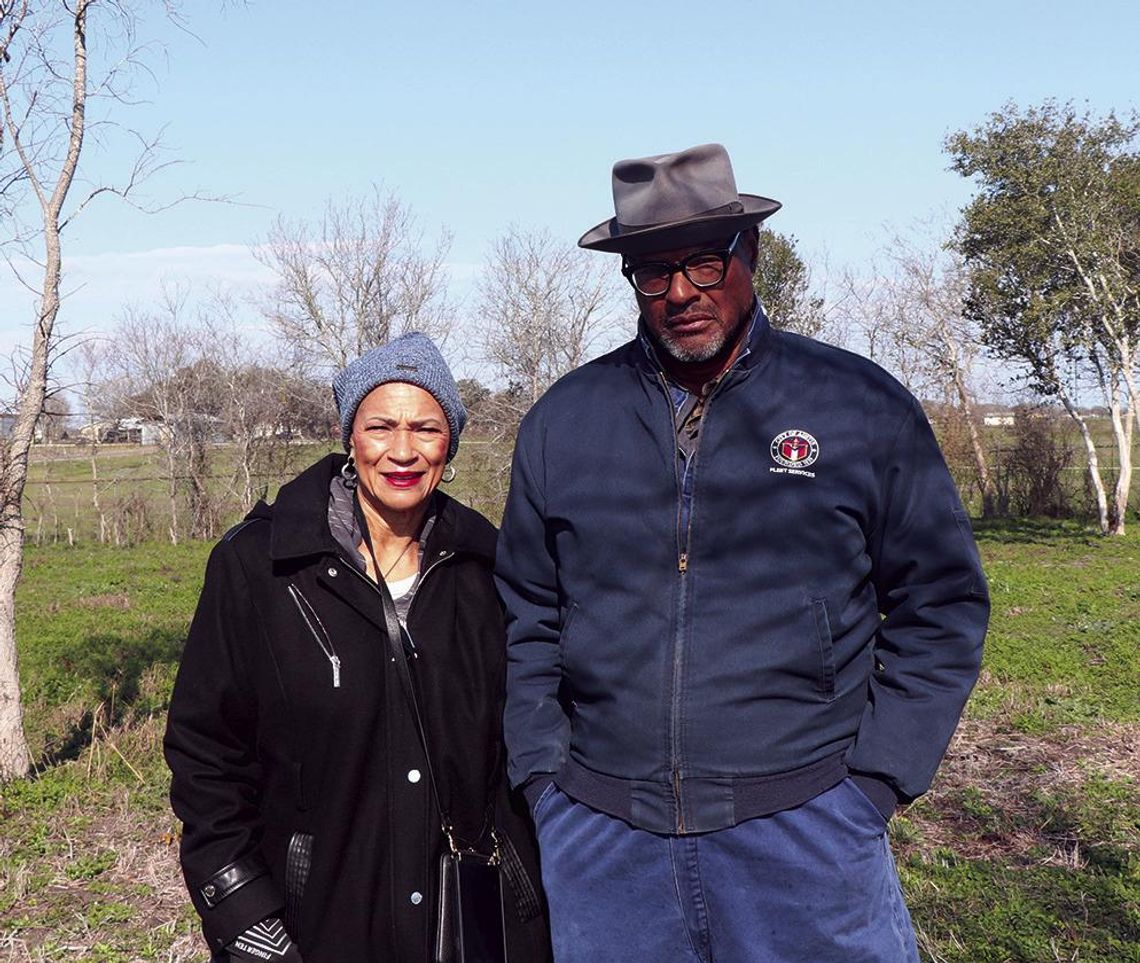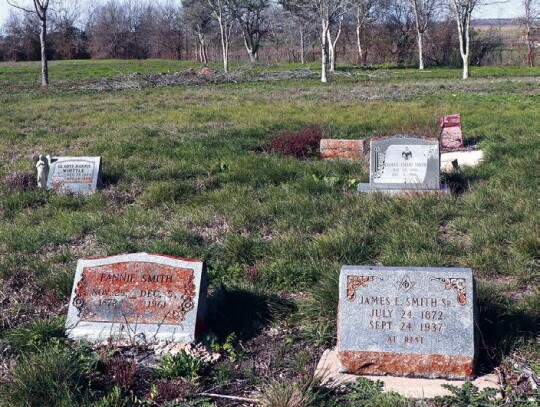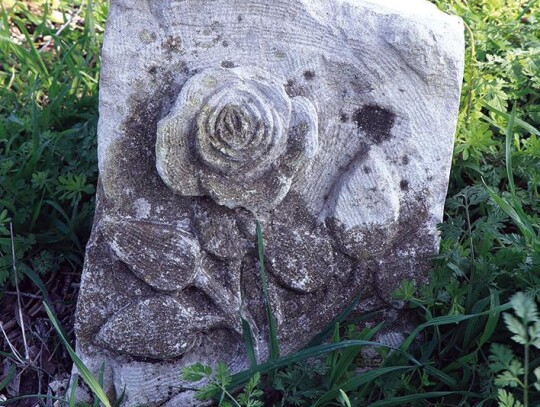A person can’t tell much about a place from outside a chain-link fence. Peeking through the links, one can’t tell the history enclosed within, the stories of the people who lived and worshiped there, who taught their children and buried their loved ones within the small, seemingly forgotten plot.
In Staples, one such two-acre tract holds the history of a freedmen colony dating back to before the signing of the Emancipation Proclamation of 1863. This African American Cemetery — then known as the Staples Colored Cemetery — was the final resting place of early freedmen settlers who made their home in the area in the years surrounding the Civil War, with at least one marked grave dating back to 1847.
Descendants of these freedmen, Marilyn Johnson and Marvin Merriweather, Jr., with the help of local historian, Peggy Anderson, have endeavored to secure the stories of their ancestors held within the cemetery, but the journey has not been easy.
To understand the historical context, Johnson and Merriweather shared a brief history of how the cemetery originally came to be.
“During Reconstruction, you had all these freemen colonies all over the South, and this was one of them,” Merriweather explained.
“Many of these freedmen had traveled thousands of miles on foot, in mule-drawn wagons, and suffered the hardship of survival through unimaginable conditions,” Johnson continued. “When they left the plantations, they had no idea where they were going and what they would encounter on their journey to a new life. Staples was the area many of them settled, and there were other freedmen colonies in the local areas, such as one located in Lockhart — St. John Colony—” “—That’s where you had your schooling. That’s where you had your church,” Merriweather added. “They just started burying people here, and some of those people were our relatives.”
Over time, many of these relatives relocated to surrounding areas, including San Marcos and New Braunfels. The original colony land, which once held a small, brick church and a school, became abandoned save for the cemetery, which was maintained by Marvin Merriweather, Sr. Upon his passing, the plot quickly became overgrown, its history lost to tangles of weeds and brush.
Then one day, lifelong Staples resident Peggy Anderson noticed a man she didn’t recognize working on the property. “I’ve lived here all my life,” Anderson said. “For us old timers, we grew up knowing this was a cemetery. We knew at one time there was a church and a school there. This was a colony. We don’t want to lose that part of our history with the community.”
Motivated by her sense of community preservation, Anderson looked up the property on the appraisal roll to learn that it had been sold to Pavement Enterprises for back taxes. “I… started following up on everything according to the health and safety code, chapter 7-11, which governs cemeteries,” Anderson said. “Cemeteries are exempt from taxation.”
Anderson soon learned that there were complications surrounding the tax code, meaning that though the cemetery was exempt, an organization must apply for the exemption in order to qualify. At that time, no one had applied for the exemption, which meant that the San Marcos CI and Guadalupe County began levying taxes in 2010, leading Wes Dixon of Pavement Enterprises to purchase the property in 2019.
Anderson began working behind the scenes, investigating the original 1905 deed that stated the land was for burial and worship purposes. This placed a restriction on the land for future development because, according to Texas law, a cemetery cannot be used for anything else.
“The last deed owner was the Pleasant Hope Memorial Cemetery trustees,” Anderson said. “There was no question at that point that the entire property at the time of the sale really was a cemetery. You can go to district court and pay to have an archaeologist or someone come out and make sure every person’s remains are uncovered and relocated somewhere, which would be a tremendous cost, but otherwise, it’s illegal to use it for other purposes.”
With this evidence brought to light, Dixon decided to donate the property to the remaining descendants of the Staples freedmen colony. “The attorneys who handled the foreclosure for Guadalupe County called and said he was willing to donate it,” Anderson said. “Since I’m the one they knew, they contacted me. I called the descendant I knew at that time. He put me in touch with Marilyn.”
“I had not personally been to the cemetery or I was too young to remember, but I knew I had to join her in her fight,” Johnson said. “I immediately started contacting as many people that I knew to help—a majority of them being my siblings.”
Working together with Anderson, Johnson and her family formed the Staples African American Freedmen Colony Association, an organization dedicated to the guardianship and preservation of the Staples Colored Cemetery.
As soon as everything was in order, Dixon donated the cemetery to them. They registered the land as an Historic Texas Cemetery, and as such protected from future development.
However, the efforts to ensure the freedmen colony’s legacy continues as Johnson, Merriweather and Anderson work to secure an official Historical Marker.
“They’re very expensive,” Johnson said. “But I’d like to see it done in my lifetime.”
As the organization strives to secure the Historical Marker, community members and fellow descendants of the Merriweather family continue their upkeep of the cemetery. Recently, the cemetery has gained the attention of the Dr. Todd Allmann and the Anthropology Department at Texas State University. Through the use of the department’s ground-penetrating radar, they have been able to locate many of the unmarked graves.
“We had a lot of people donate their help and time,” Johnson said. “There’s a need to make sure that these burial grounds are not becoming apartment complexes, so we need to recognize the contribution that they made to this community.”
Though this has been a long struggle for the Merriweather family, the battle is not over. The family hopes to chronicle the story of the freedmen settlers with a memorial book. The SA-AFCA is seeking descendants of those buried In the cemetery for old pictures and stories to be included in the memorial. Individuals can go to “Find A Grave” and enter Staples Colored Cemetery for a list of those buried in the cemetery. To give financial support to the SA-AFCA, donors can send funds to the Staples African-American Freedmen Colony Association, P. O, Box 3142, San Marcos, 78667.
— Marilyn Johnson, SA-AFCA









